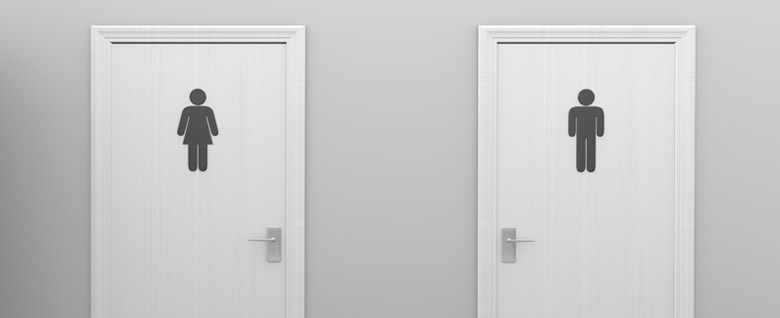In March 2016, it was reported in the press that a woman in Kent attempted to use the female toilets in her local pub but was refused entry as a result of her transgender status.
The customer informed bar staff that she needed to use the bathroom, however she was informed that she was not permitted to use the female toilets. She then provided documentary evidence that she identified as a woman however, it is reported that she continued to be refused access on the basis of ‘company policy’.
It is understood that the incident was recorded on a mobile phone, copies of which have subsequently been posted on news outlets and social media.
The incident echoes a similar case reported in 2014 where an individual was successful in bringing a claim in the County Court for Direct Discrimination and Victimisation, subsequently being awarded compensation for the treatment to which she had been subjected.
Statistics
In 2012, a Trans Mental Health and Emotional Wellbeing Study was conducted. Of the 889 transgender people that participated in the study it was reported that:
- 81% avoided certain situations due to fear;
- Of the 81%, over 50% avoided public toilets and gyms specifically, and 25% avoided clothing shops, other leisure facilities, clubs or social groups; and
- 51% of the participants worried that they would have to avoid social situations or places in the future due to fear of being harassed, or being outed as transgender.
In relation to the work place:
- 52% of the participants had experienced problems with work due to being transgender or having a transgender history. The most common issue was harassment or discrimination, with 19% reporting that they had experienced this.
- 18% believed that they had been unfairly turned down for a job, whereas 16% had not applied for one due to fears of harassment and discrimination in the work place;
- 9% had not provided references because of their gender history; and
- 7% had left a job due to perceived harassment or discrimination.
The law
In order to make a claim for discrimination under the Equality Act 2010, one must be able to able to show that they have suffered less favourable treatment as a result of their protected characteristic. The Equality Act 2010 lists nine characteristics which are protected by law, one of which is gender reassignment.
Section 7 (1) of the Equality Act 2010 defines gender reassignment as:
A person has the protected characteristic of gender reassignment if the person is proposing to undergo, is undergoing or has undergone a process (or part of a process) for the purpose of reassigning the person's sex by changing physiological or other attributes of sex.
There are different ways in which a transgender person can be discriminated against as defined in the Equality Act 2010. These include Direct and Indirect Discrimination, Harassment, Victimisation following the carrying out of a protected act;
Further, under the provisions of the Act it is possible to establish that an individual has suffered unlawful unfavourable treatment as a result of knowing someone who is transgender, (namely Discrimination by Association) or as a result of someone perceiving an individual as being transgender, (namely Discrimination by Perception).
Such claims can be made against employers, individual employees and companies/organisations engaged in the provision of services, as was the case in the case study discussed above.
If you, or anyone else feel that you have suffered discrimination as a result of gender reassignment, please contact our team on 01616 966 229.
By employment and discrimination advisor, Harriet Legder



Comments